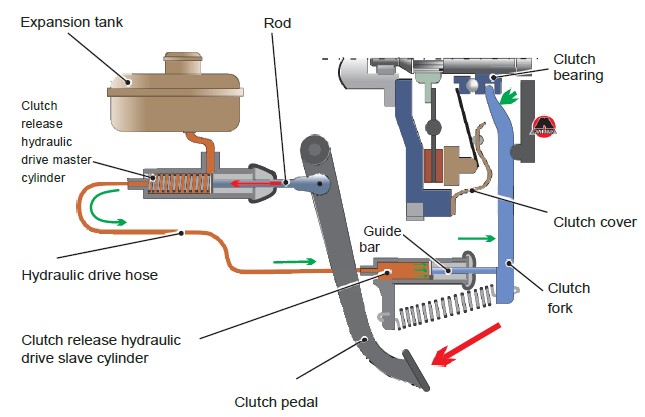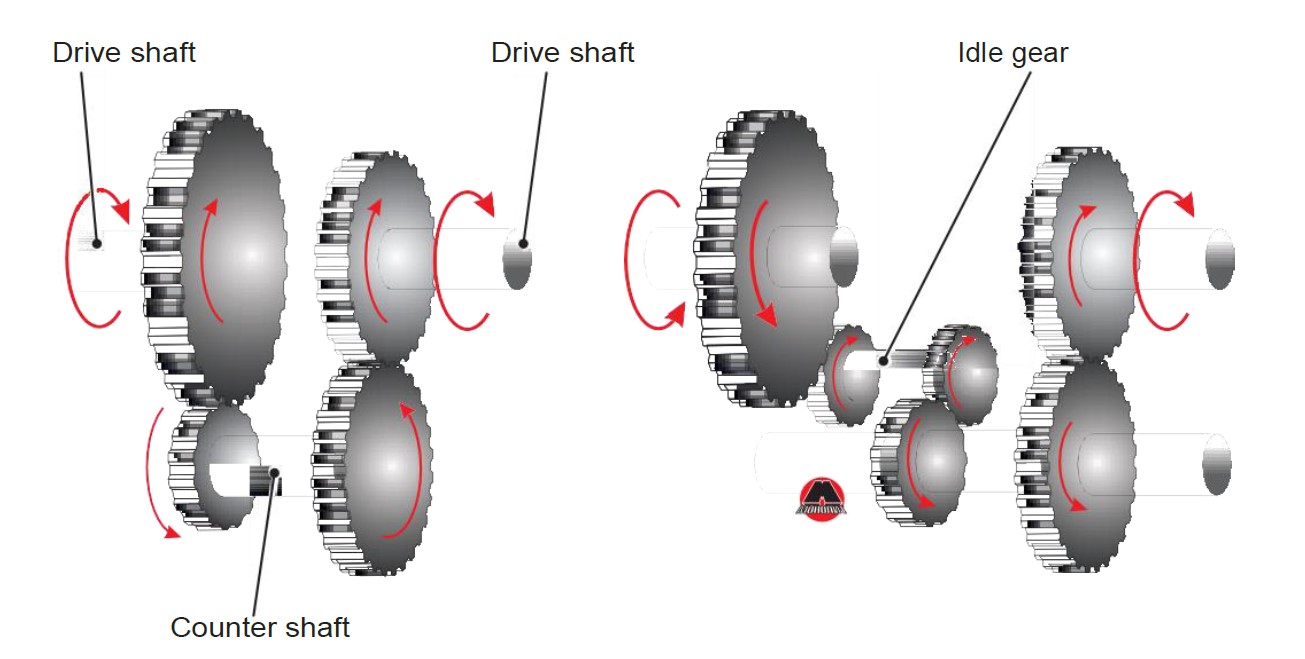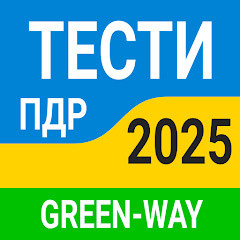5.2.1 Elements of manual transmission
Let’s consider in more detail the elements of the mechanical transmission of a car with a classic layout (if you have forgotten what a layout is, then you should return to Chapter 3 "Components of the Car and Layout Diagrams"). Thus, the transmission with this arrangement of the units has the following elements (Figure 5.1):
- clutch;
- gearbox;
- drive shaft with hinged joints (in this case – cardan shaft);
- drive gear with differential;
- half shafts.
Note
All the elements in the following image are shown schematically. Taking into account the fact that the differential and the axle shafts are located inside the drive gear housing and in the axle cases, respectively, only the drive gear is shown in Figure 5.1.
 Figure 5.1 Engine and transmission components.
Figure 5.1 Engine and transmission components.
Note
In case if the car is front-wheel drive, then the thrust from the engine is transmitted to the front wheels through two separate - right and left - drive shafts, that are joined hinged with the main gear and wheel hobs (the hobs are described in the chapter "Chassis"). This will be discussed in the section "Hinges of Equal Angular Velocities". The same shafts and hinged joints are installed on cars with independent suspension of the rear drive wheels, but more on that later. It should be mentioned that for all-wheel drive vehicles - those in which the thrust from the engine is transmitted to all wheels - a transfer case is also installed in the transmission. We will talk about this below.



 Figure 5.2 Clutch.
Figure 5.2 Clutch. Figure 5.3
Figure 5.3  Figure 5.4 Arrangement of one-disk dry clutch.
Figure 5.4 Arrangement of one-disk dry clutch.
 Figure 5.6 Clutch release hydraulic drive.
Figure 5.6 Clutch release hydraulic drive. Figure 5.7 Gear set (gear pair)
Figure 5.7 Gear set (gear pair) Figure 5.8 Simplified layout of single-stage gearbox.
Figure 5.8 Simplified layout of single-stage gearbox.






 Figure 5.16 Sequential gearbox.
Figure 5.16 Sequential gearbox. Figure 5.17 Example of transfer case.
Figure 5.17 Example of transfer case.
















Our test questions are 100% compliant with the official ones, for which theoretical exams are taken in the service centers of Ukraine.
All other resources that claim that their test items are official, mislead you. The illustrations are modified and irrelevant text is placed in them. Preparing with the help of such resources, you can get confused on the official exam and simply do not pass it.